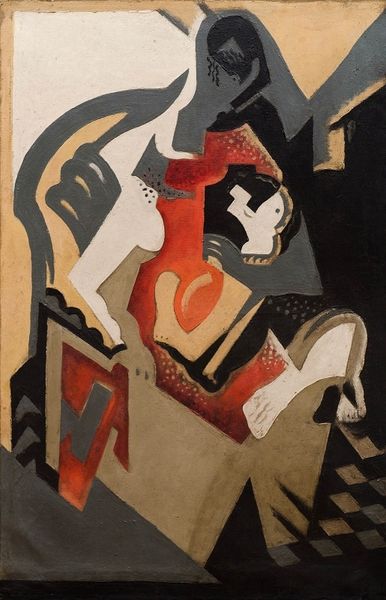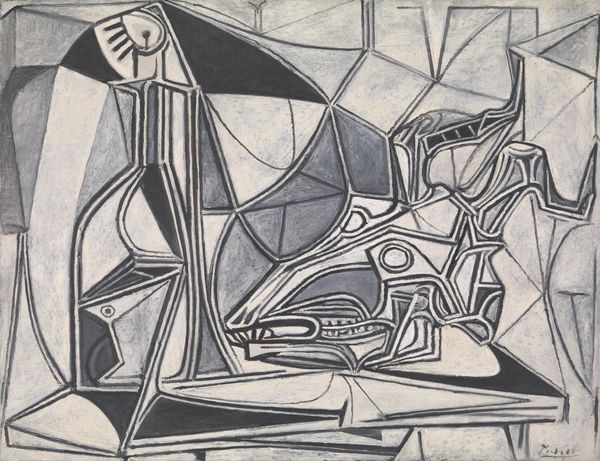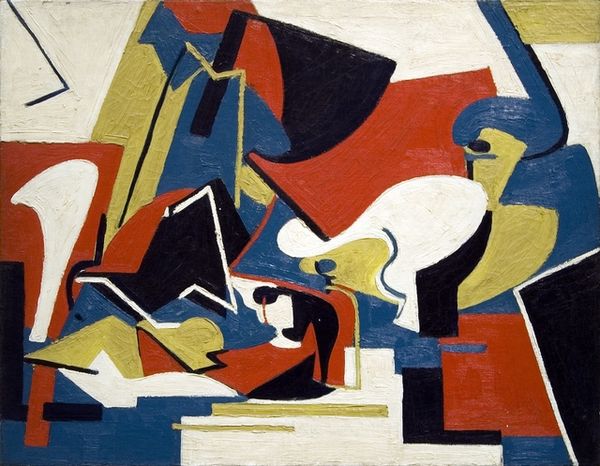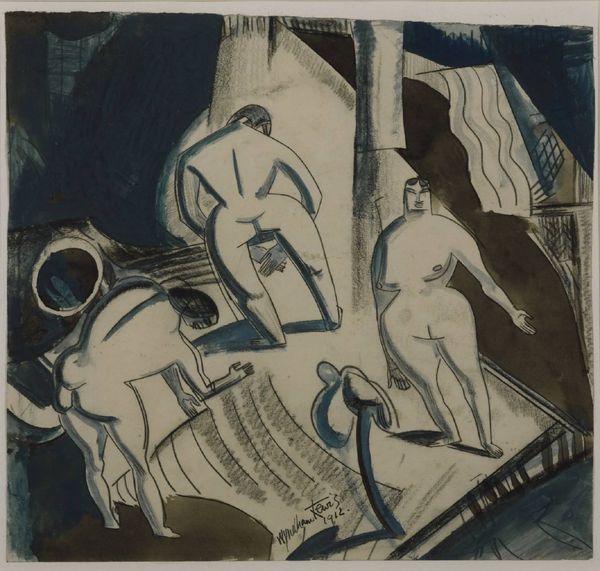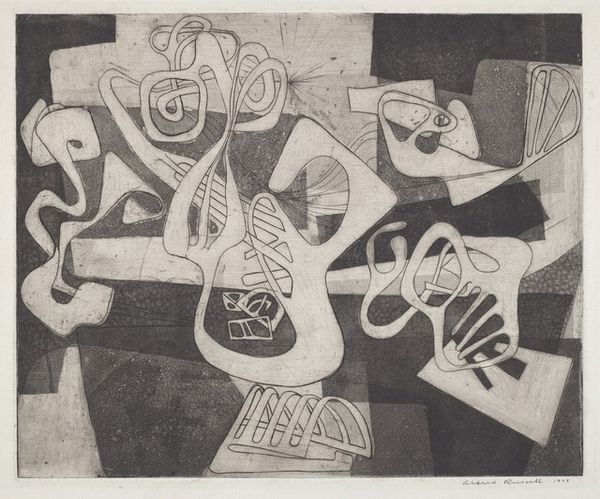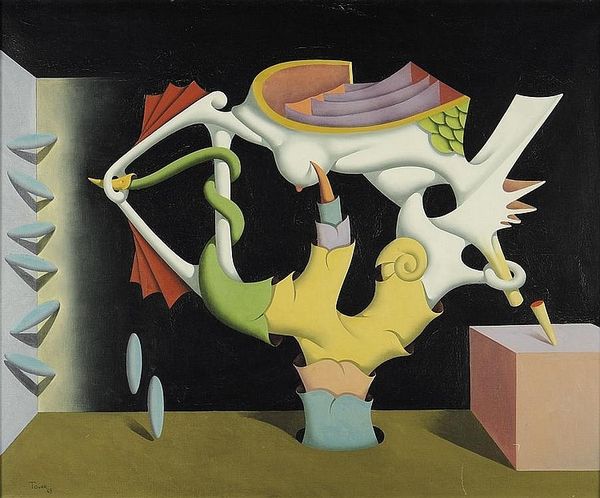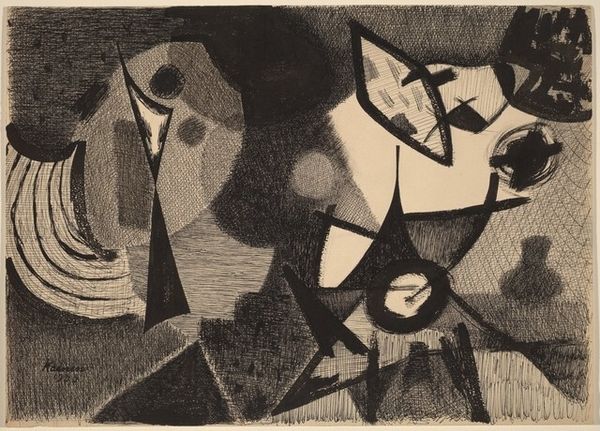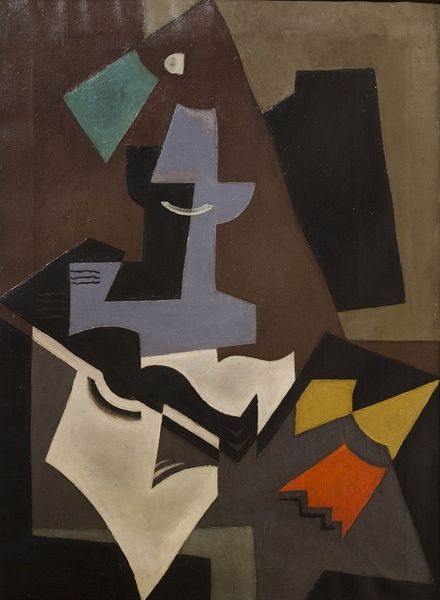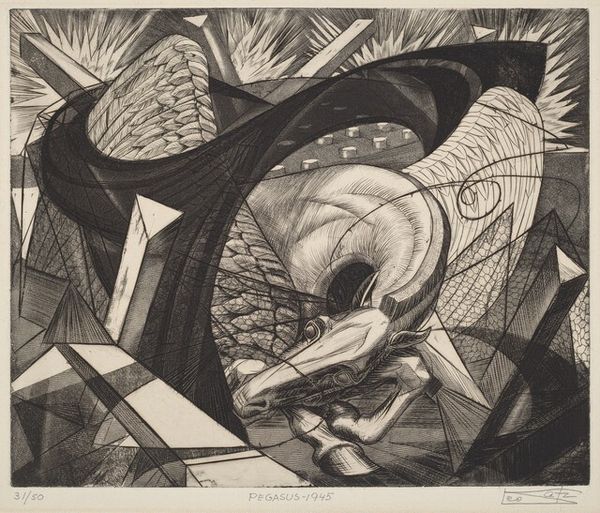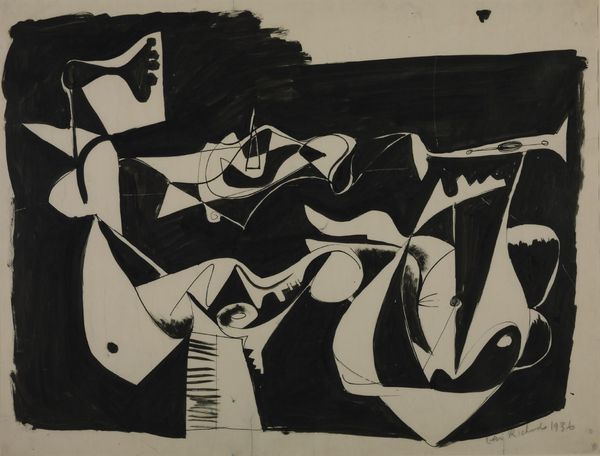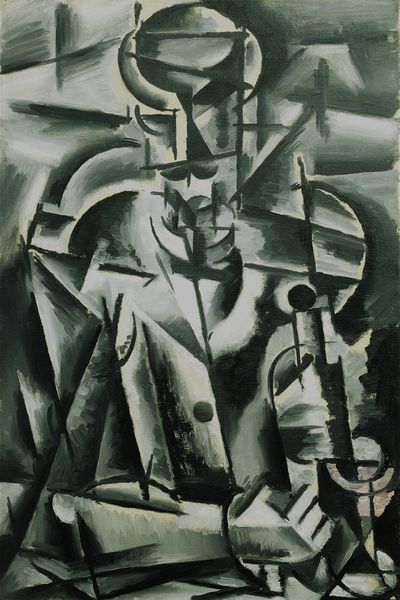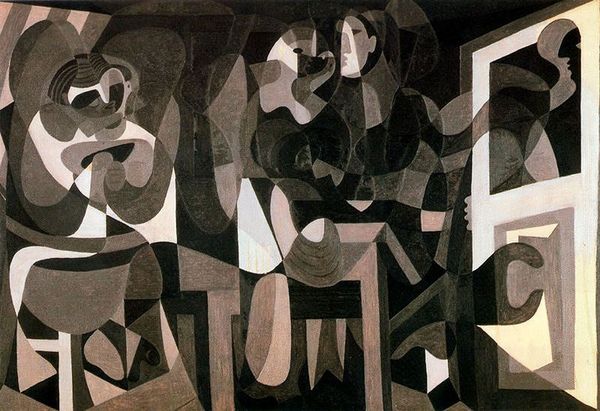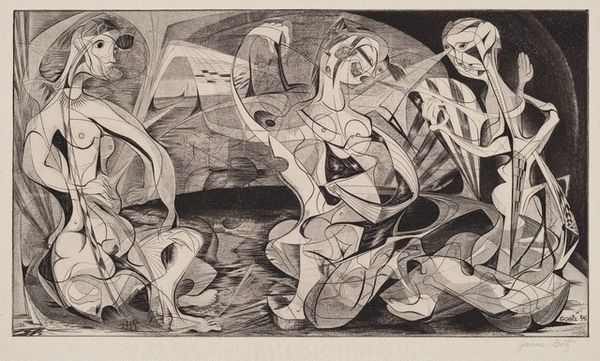
Dimensions: 349 x 776 cm
Copyright: Pablo Picasso,Fair Use
Curator: Let’s spend some time discussing one of the most impactful works of the 20th century: Picasso’s “Guernica.” Created in 1937, this large monochrome oil painting serves as a potent anti-war statement in response to the bombing of Guernica during the Spanish Civil War. Editor: Wow, even seeing it reproduced here, it just hits you. That chaotic energy, the broken figures, the overall feeling of anguish...it's a visceral gut punch, isn't it? I imagine it must be immense. Curator: Indeed. Its scale, nearly 12 feet tall and 25 feet wide, contributes to its immersive and overwhelming effect. We need to understand this mural-sized work as rooted in the political context of its time. Franco's forces, supported by Nazi Germany, attacked Guernica, a Basque town with strong Republican affiliations. Editor: That really comes through. You can almost feel the screams echoing through the canvas. Picasso was known for his cubism, but the emotion transcends the style. The dismembered figures, the stark black and white, the horse in agony – it’s pure, raw grief painted onto the canvas. Do you think he considered at that point its resonance and future implications for representing war? Curator: It’s reasonable to consider such an understanding when considering his involvement with the Spanish Republican cause. He originally pledged to paint a work expressing solidarity with the Spanish Republic to be displayed at the Spanish Pavilion at the 1937 Paris International Exposition. Guernica became his immediate reaction, embodying anti-fascist and anti-authoritarian values through distorted perspectives that expose the devastating consequences of war. Editor: Absolutely. There’s something eternal about its message. And perhaps that's why it continues to haunt and move viewers, generation after generation, because we haven’t learned to avert our collective gaze from those kinds of atrocities, but works of art like these demand such attention. Curator: Precisely. "Guernica" remains relevant today because it speaks to the timeless issues of violence, political upheaval, and the suffering of innocents. It encourages reflection on how we confront war's trauma and seek social justice, emphasizing art’s function as both documentation and enduring protest. Editor: It's interesting how such a fractured representation can offer such clarity about the devastating wholeness of pain. Thank you.
Comments
No comments
Be the first to comment and join the conversation on the ultimate creative platform.

